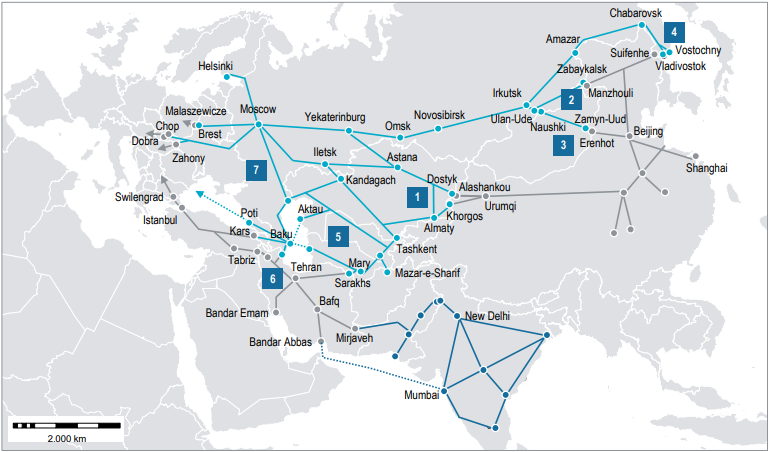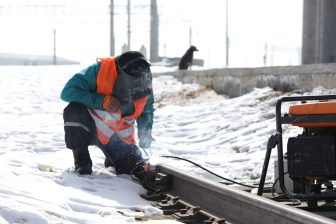
First train Japan-Russia via Trans-Siberian railway to arrive
The first train with cargo from Japan is currently on its way to Vorsino in Russia via the Trans-Siberian route, expected to arrive tomorrow. The shipment of electronics marks a milestone in the relation between the countries, as trade has mostly been via sea and air.
Until recently, rail freight operations between Japan and Russia were limited, as the procedures are complicated and information scarce. But earlier this month the two governments announced the intention to develop a regular railway route and thus pave the way for resolving territorial disputes. Russian Railways and the Ministry of transport of Japan committed to increasing the volumes of Japanese goods’ multimodal shipments across the ports of Russia’s Far East and Trans-Siberian railway.
The journey
On 17 August, RZD Logistics sent a 40-foot container from the Port of Kobe (Japan) to the Port of Vostochny (Primorskiy Krai, Russia). Here, the container was placed on a platform and loaded onto an accelerated container train, set to hit the Trans-Siberian railway. Customs procedures will only take place upon arrival at the Vorsino station (Kaluga region). From there it will be transported by truck to the warehouse of a consignee in Khimki town, close to Moscow. The expected date of arrival to Vorsino is 31 August, the Russian logistics provider said.
Text continues below the image

The general time of delivery from port to terminal is fourteen days, while the train journey takes seven days, in line with the principle ‘Trans-Siberian in seven days’, an ambition set by Russian Railways. “By the end of 2018 we will be able to evaluate and improve the delivery speed of these test shipments”, commented CEO of RZD Logistics Viacheslav Valentik. The container is equiped with temperature, moisture and vibration level sensors, taking into consideration the fact that Japanese companies deliver mostly high value added goods, he added.
What the future holds
As soon as the first train arrives, another test shipment is scheduled to depart Japan in the direction of Russia. This time it involves a 20-foot container, which will be shipped across the Sea of Japan at Yokohama, arriving at the Port of Vladivostok. From there, it will be loaded onto a train to Silikatnaya station, nearby Moscow.
“This project is a huge logistics step towards Japanese consignors. End 2017 RZD Logistics created a single window service of Russian Railways Holding, dedicated to this market. This service is designed to provide clients from Japan with information support and high-quality cooperation. We have launched test shipments, which will allow us, together with Japanese colleagues to choose optimal working routes across the Trans-Siberian railway.”
Trans-Siberian railway
The Trans-Siberian Railway connects Moscow and Vladivostok, in the east of Russia, where freight can be continued by sea to Japan. It is also the most northern route of the so-called Eurasian railway network, transiting only though Russia on its way to the Far East. It was built between 1891 and 1916. With 9,300 kilometre, it is the longest railway in the world. The infrastructure is considered to be highly reliable, according to research institute Roland Berger. Currently, the route is mainly used by North Korean and Chinese companies trading with the west.
There are two sub-branches diverting into China via Inner Mongolia; one via the border of Manzhouli-Zabaykalsk and another via the border of Erenhot-Zamyn. Especially the first route is highly popular for freight transport to and from China. The second one requires infrastructure upgrades to improve capacity.
Also read: Japan and Russian plan rail freight route via Trans-Siberian Railway





